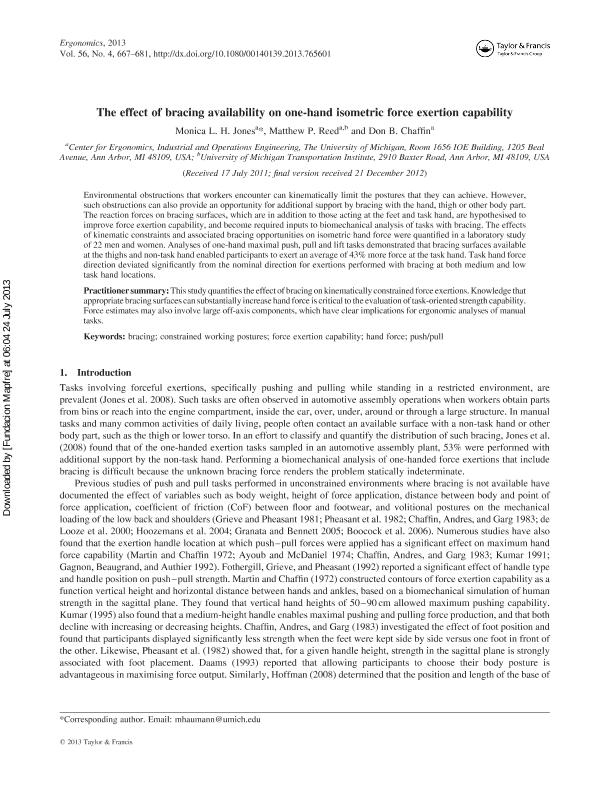The Effect of bracing availability on one-hand isometric force exertion capability

Contenido multimedia no disponible por derechos de autor o por acceso restringido. Contacte con la institución para más información.
| Tag | 1 | 2 | Valor |
|---|---|---|---|
| LDR | 00000cab a2200000 4500 | ||
| 001 | MAP20130022505 | ||
| 003 | MAP | ||
| 005 | 20130725094411.0 | ||
| 008 | 130724e20130401esp|||p |0|||b|spa d | ||
| 040 | $aMAP$bspa$dMAP | ||
| 084 | $a875 | ||
| 100 | 1 | $0MAPA20130009780$aJones, Monica L. H. | |
| 245 | 1 | 4 | $aThe Effect of bracing availability on one-hand isometric force exertion capability$cMonica L. H. Jones, Matthew P. Reed, Don B. Chaffin |
| 520 | $aEnvironmental obstructions that workers encounter can kinematically limit the postures that they can achieve. However, such obstructions can also provide an opportunity for additional support by bracing with the hand, thigh or other body part. The reaction forces on bracing surfaces, which are in addition to those acting at the feet and task hand, are hypothesised to improve force exertion capability, and become required inputs to biomechanical analysis of tasks with bracing. The effects of kinematic constraints and associated bracing opportunities on isometric hand force were quantified in a laboratory study of 22 men and women. Analyses of one-hand maximal push, pull and lift tasks demonstrated that bracing surfaces available at the thighs and non-task hand enabled participants to exert an average of 43% more force at the task hand. Task hand force direction deviated significantly from the nominal direction for exertions performed with bracing at both medium and low task hand locations. | ||
| 773 | 0 | $wMAP20100019818$tErgonomics : the international journal of research and practice in human factors and ergonomics$dOxon [United Kingdom] : Taylor & Francis, 2010-$x0014-0139$g01/04/2013 Volumen 56 Número 4 - abril 2013 , p. 667-681 |

